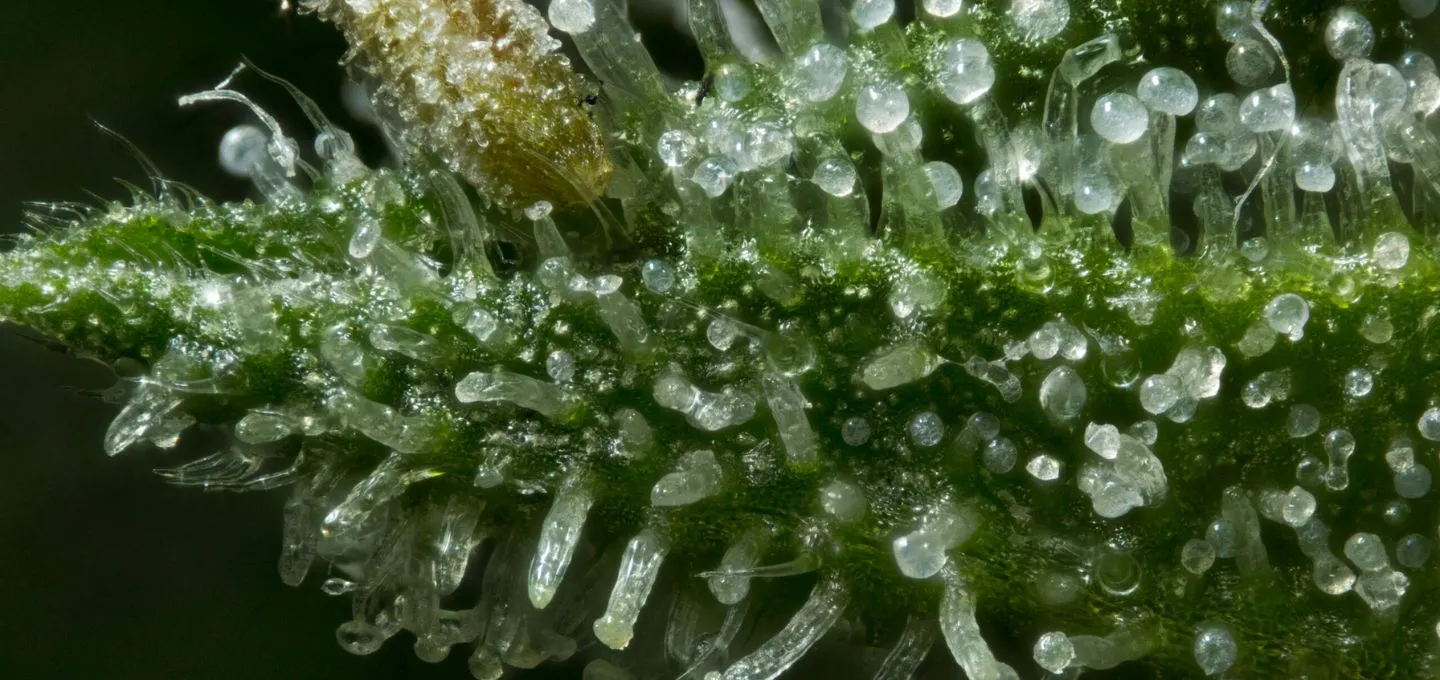Trichomes are small, hair-like glands on cannabis flowers and leaves.
Cannabinoids and terpenes are abundant in these mushroom-shaped resin glands on the plant.
What are Trichomes?
Table of Contents
There are over 100 identified cannabinoids that can be present in cannabis, but THC and CBD are the most abundant and well-known.
Trichomes produce these compounds through resin that gets secreted from the epithelial stalk and accumulates in the bulbous head.
This resin also contains terpenes – aromatic compounds that influence flavor and effects.
Trichomes begin forming a few weeks into the flowering stage and develop rapidly as the flowers mature.
Their highest concentrations occur during peak ripeness, just before senescence.
Visually, trichomes present as translucent or cloudy stalks with swollen resinous heads.
Initially clear, the heads turn cloudy white and then amber as cannabinoids break down and oxidize over time.
There are three main classifications of trichomes:
- Bulbous: The small round trichomes occurring abundantly across leaves and flowers. They contain lower cannabinoid levels.
- Capitate-Sessile: More abundant on leaves but also prevalent on buds. Medium-sized with higher cannabinoid content.
- Capitate-Stalked: The largest trichomes primarily found on mature calyxes. Highest in THC and other cannabinoids.
Why are Trichomes Important?
Trichomes and their resin are vital for cannabis potency and quality.
When growers breed plants and cultivate flowers, maximizing trichome development is a primary goal.
Buds with the highest trichome density typically deliver the most powerful effects and flavors.
Trichomes also serve a biological purpose for the plant itself. The compounds found within help deter insects and other predators.
Their bitter taste and psychoactive properties make them less appealing to consume. The resin further protects against environmental threats like mold, bacteria, and UV radiation.
Overall, trichomes are an integral part of the cannabis plant.
Examining their clarity, color, and prevalence enables the assessment of potency and ripeness.
Trichomes hold the coveted cannabinoid and terpene contents that provide therapeutic benefits to users.

 Fact Checked by Doctor Name
Fact Checked by Doctor Name